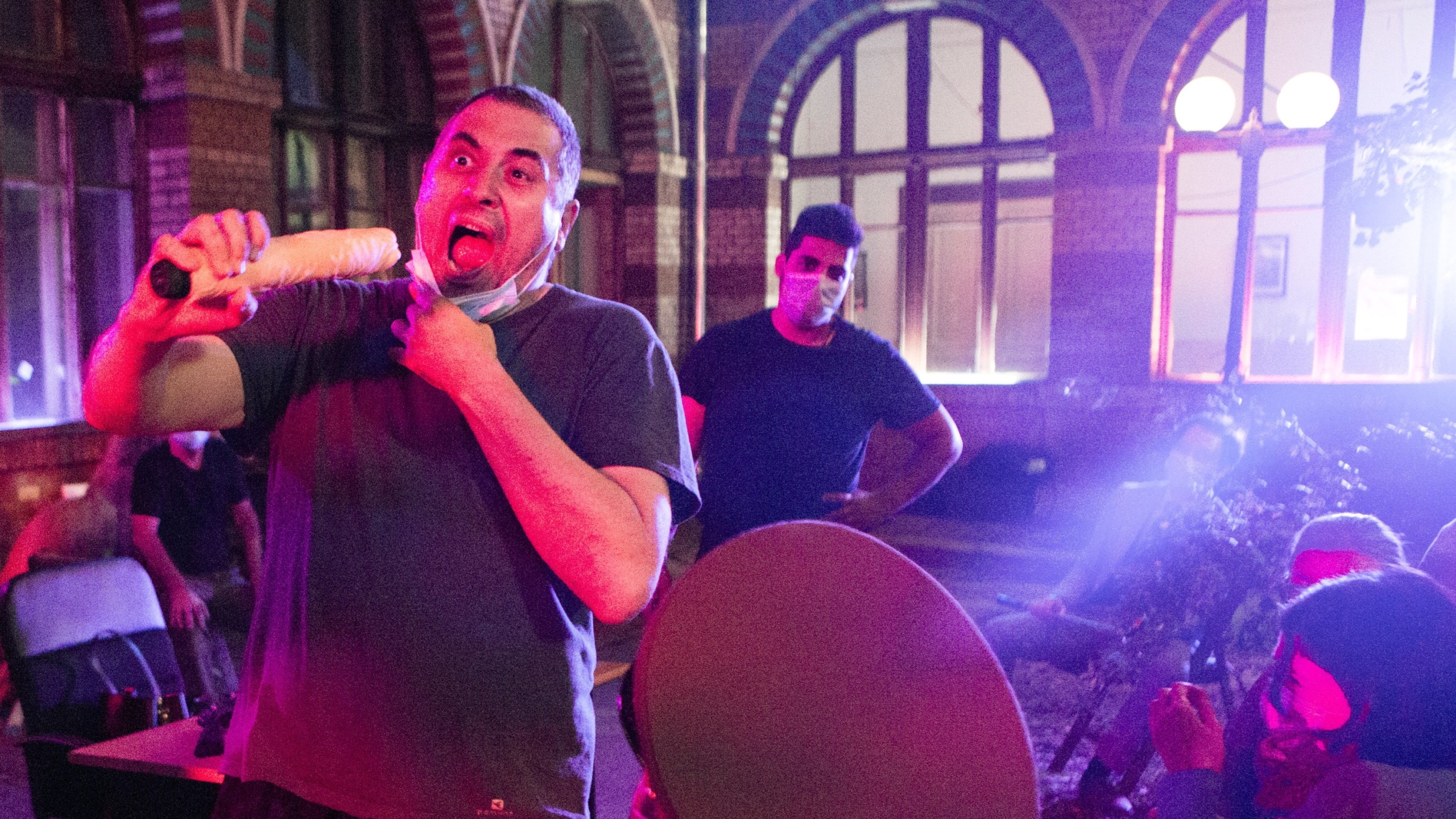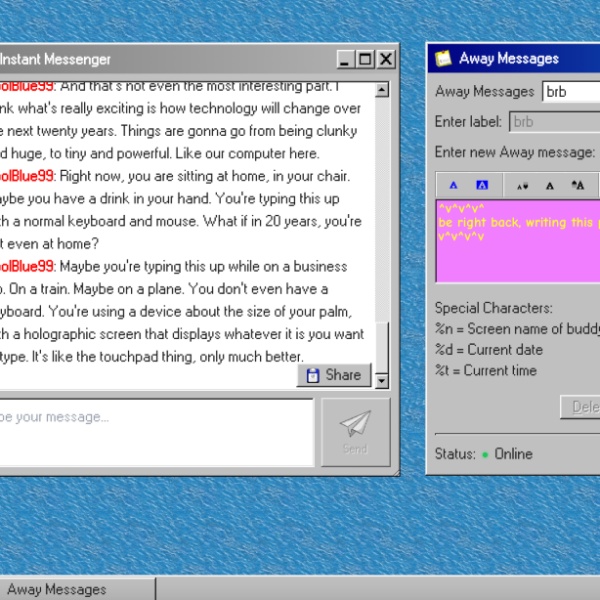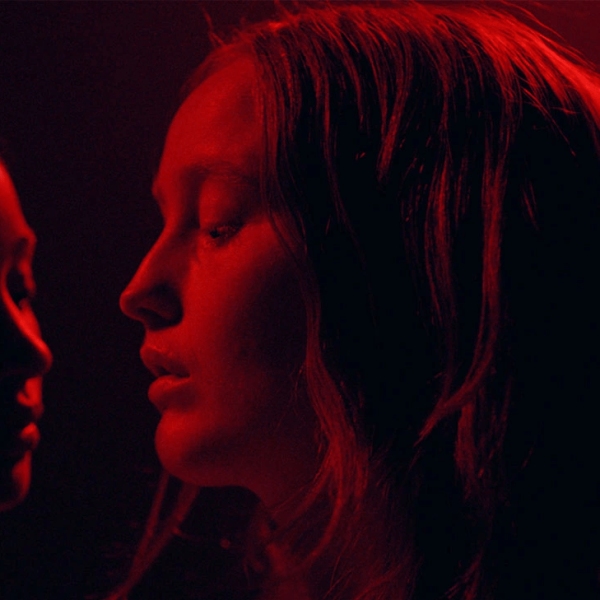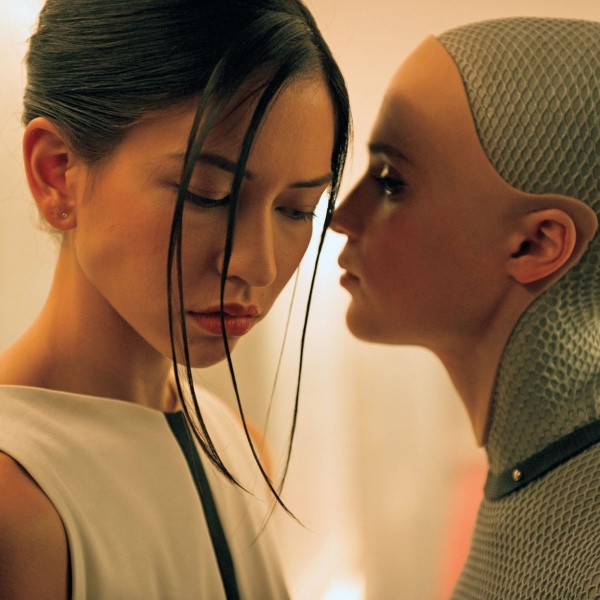It’s rare for a new feature-length project from an internationally renowned filmmaker to arrive almost fully shrouded in mystery, especially when the film has been programmed at a major festival. Such was the case with Radu Jude’s “Sleep #2,” one of two new short features from the Romanian director to receive its world premiere at the 2024 Locarno Film Festival, alongside “Eight Postcards from Utopia” (more on that later). In the festival’s program, the only synopsis or capsule for “Sleep #2” was as follows: “A fallen flower / Returning to the branch? / It was a butterfly. / (Moritake).”
The accompanying promotional images — illustrations, rather than stills — would turn out to not be in the final film. All that festival attendees had to go off was a short list of credits (Jude himself in most of the cited production roles), a runtime (61 minutes), a mention that the film would be in color, and, most intriguing, a note that it would have no dialogue. And there was no press kit available for even a morsel of further pre-screening context.
After all the mystery and cryptic programme materials, what “Sleep #2” actually turned out to be was an amusing rugpull from Jude, returning to Locarno a year after his playful feature “Do Not Expect Too Much From the End of the World” collected the Special Jury Prize in the international competition. “Sleep #2” and “Eight Postcards from Utopia” both played out of competition this year, though one wonders what awards Jessica Hausner’s jury could possibly have assigned them.
Introduced in brief opening credits as a “desktop film,” “Sleep #2” forces you to confront the ultimate resting place: the grave. Between January 2022 and February 2023, Jude captured footage from the live EarthCam feed from a cemetery in Bethel Park, Pittsburgh, the low-resolution camera focused on the gravesite of Andy Warhol. “Sleep” was the name of Warhol’s 321-minute avant-garde film from 1964, which consisted of looped footage of poet John Giorno sleeping.
Jude’s 61-minute film collects ‘found footage’ from both day and night recordings captured by EarthCam across different seasons. We witness visitors coming to pay respects (or at least take selfies), adding to or disrupting tombstone decoration of Campbell’s Soup tins; cemetery staff performing scheduled cleanups of the popular shrine; and animals wandering into frame and loitering by the grave. Almost the only sounds we hear are those ambient ones of life by the grave, though from the camera’s far back stationary position (zooming in on occasion) you can faintly hear fragments of conversations.
Operating on one level as a meta reflection on Warhol’s work, “Sleep #2” continues Jude’s interest in highlighting the various ways to construct cinema — or video art in this case, as some may be inclined to label the film. Here, Jude is recording footage live-streamed from across the world, from a camera he didn’t set up and that he can’t reposition, which is capturing people who (mostly) don’t seem to know a camera is there, yet alone that someone is watching them live. It proves an oddly hypnotizing approach to the observational documentary format, prompting you to voyeuristically read meaning in the gestures and barely audible actions of those gravesite visitors we never see up close. For the animals too, in a way, since Jude managed to get footage of multiple groups of creatures being drawn to this tombstone in particular.
More memorable human visitors include a large group, including parents with children, who set up a picnic around the grave while a member of their party dons a Warhol-esque wig and does a bit of discernible acting like Warhol taking photos, snapping solo and group pictures of everyone assembled. Elsewhere, what seems to be a fairly young man can faintly be heard saying something along the lines of, “There’s a camera.” He proceeds to partly pull his pants and underpants down, mooning the EarthCam live feed and unwittingly baring his ass for cinema.
With the 71-minute “Eight Postcards from Utopia”, Jude and co-director Christian Ferencz-Flatz try their hand at making cinema out of television, and at making a supercut historical document out of disparate pieces of marketing. The film is assembled entirely from Romanian TV commercials for various products and services, running the gamut from Romania’s immediate post-Ceaușescu era up to now.
The montages are broken up into eight named sections (postcards) plus an epilogue, sorting the ads into themes. TV spots for newspapers, restaurants, Pepsi, phones, phone sex, shrimp-flavored chips, and a call to invest in a tourism project called “Dracula Park” are brought together despite airing years or decades apart, for their perceived latent allusions to historical developments or ideological concerns. Some of these references to societal changes are far more overt than others, such as a telecom advert that involves a man exiting a room where a Nicolae Ceaușescu speech is taking place, after his cell phone rings, the slogan saying, “First you earned the right to speak freely. Now you speak for free!”
In order, the sections are: “History of the Romanians,” “Money Talks,” “The Technological Revolution,” “Magique mirage,” “The Ages of Man,” “Found Poetry,” “The Anatomy of Consumption,” “Masculine Feminine,” and “Epilogue: The Green Apocalypse.” While some commercials are clearly trimmed for the sake of funnier supercuts (and there are some very amusing ads here), most play out unabridged and with otherwise nothing else in the way of additional tampering by the filmmakers. That changes with “The Anatomy of Consumption,” which consists of largely silent clips, many of which are extracts of commercials we’ve previously been shown. This particular montage focuses on how consumerist media portrays the physical sensation of consuming the products in question, from smelling and tasting to bathing, only with most of the sound excised to quite discomforting effect.
The manipulation in this section recalls a little of Jude’s mischief in “Do Not Expect Too Much from the End of the World”, helping to make “Eight Postcards from Utopia” feel like a logical continuation in the director’s oeuvre, rather than a curious side project. That said, whether it was Jude and Ferencz-Flatz’s suggestion or their own, the Locarno programming team were wise to screen both “Eight Postcards from Utopia” and “Sleep #2” together in one ticketed event and not individually, an approach that seems likely to continue for further festival play.
On their own, neither new film seems destined for wide-reaching commercial distribution in the same way as Jude’s recent, much longer and more (though admittedly still loosely) narratively-driven features like “Do Not Expect Too Much from the End of the World” and “Bad Luck Banging or Loony Porn.” But if they are perhaps destined to be bonus features for a Blu-ray set of Jude’s next ‘bigger’ work down the line, they will still stand out as two of the iconoclastic filmmaker’s most interesting audiovisual experiments.





